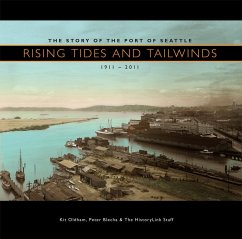A century ago Seattle was held hostage by its own waterfront. Competing railroad companies built a chaotic sprawl of railroad lines, docks, and warehouses along the shoreline of the great natural harbor of Elliott Bay, creating conditions so bad that visionary civic planner Virgil Bogue called the harbor side "a blot on the city and a menace to the lives of its people." After many years of unproductive bickering and lawsuits, the Port District Act was passed making the Port of Seattle the first public port formed under legislation. The newly public port proved its worth during World War I, when it briefly became the second busiest in the country. In succeeding decades, the Port excelled in projects that would have been nearly impossible for private companies; it met the challenges of the Depression, founded Seattle-Tacoma International Airport, helped revolutionize containerized cargo, and generated tens of thousands of jobs. Entering its second century, the Port is a recognized leader in environmental restoration, sustainable aviation, and shipping practices.








